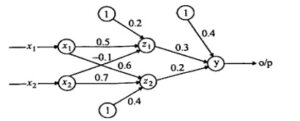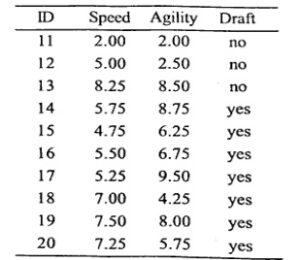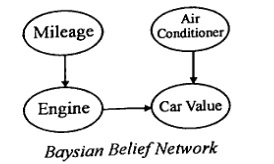Important RGPV Question
Table of Contents
Toggle
CS-601, Machine Learning,
VI Sem, CS
UNIT 1
Q.1 List the main types of machine learning algorithms and provide examples of applications for each type? (RGPV May 2024)
Q.2 Describe common evaluation metrics used for regression models of machine learning? (RGPV May 2024)
Q.3 Explain various types of machine learning used for continuous data and non-continuous data. (RGPV May 2023)
Q.4 What are the basic design issues and approaches to machine learning? (RGPV May 2022)
Q.5 Define statistical theory and how it is performed in machine learning. (RGPV May 2022)
Q.6 Differentiate between training data and testing data. (RGPV May 2022)
Q.7 What is model selection in Machine Learning? (RGPV May 2022)
UNIT 2
Q.1 Explain the importance of data normalization in machine learning for improving model convergence, stability and performance? (RGPV May 2024)
Q.2 Discuss the advantages and limitations of sigmoid and ReLU activation functions in terms vanishing gradient problem and output range? (RGPV May 2024)
Q.3 Define gradient descent in the context of optimization algorithms used in machine learning? (RGPV May 2024)
Q.4 Explain how L1 regularization (Lasso) and L2 regularization (Ridge) work to penalize the magnitude of model parameters differently? (RGPV May 2024)
Q.5 Replace the old weights (not the bias) in the network depicted in the following figure using back-propagation algorithms. A [0,1] input pattern is given to the network, and the desired output is 1. Use the Sigmoid activation function and a learning rate of=0.3. (RGPV May 2023)

Q.6 Describe the benefits of transfer learning features that can be transferred. Explain Inception net architecture in detail. (RGPV May 2023)
Q.7 Differentiate: (RGPV May 2023)
i) Various loss functions
ii) Types of Gradient Descent Optimizers
Q.8 How can we make the model non-linear? If we only use linearity, how will that affect Gradient Descent? (RGPV May 2023)

Q.9 What do you mean by Gradient Descent? (RGPV May 2022)
Q.10 Write the algorithm for back propagation. (RGPV May 2022)
Q.11 Explain in detail principal component analysis for dimension reduction. (RGPV May 2022)
UNIT 3
Q.1 List and explain the types of padding commonly used in Convolutional Neural Networks (CNNs)? (RGPV May 2024)
Q.2 Describe the types of transfer learning, including feature extraction and fine-tuning? (RGPV May 2024)
Q.3 Explain why high-dimensional data can be challenging for machine learning algorithms? (RGPV May 2024)
Q.4 Give an explanation of the One-hot encoding as well as the Label encoding. In what ways do they change the dimensionality of the data that has been provided? (RGPV May 2023)
Q.5 Break down how CNN actually operates. The image is downscaled, and the number of filters is increased as we approach the model’s output, but why? (RGPV May 2023)
Q.6 “Model performance can be greatly improved through careful hyperparameter tuning”. Justify the statement. (RGPV May 2023)
Q.7 Describe the procedure that can be used to identify overfitting and underfitting in a CNN model. Include some potential solutions to this problem as well. (RGPV May 2023)
Q.8 Clarify the meaning of Confusion metrics in the context of machine learning. What other metrics might be derived from the metric of confusion? (RGPV May 2023)
Q.9 Explain how the KNN method is implemented. Below is information regarding a player’s speed and agility that will be used to determine whether he will be drafted into the team. Predict the likelihood that a player with “speed 6.75” and “agility=3” will make the team using the KNN machine learning model assuming “k = 3”. (RGPV May 2023)
Q.10 Explain Locally weighted linear regression. (RGPV May 2022)
UNIT 4
Q.1 Define Recurrent Neural Networks (RNNs). Explain the types and architecture of an RNN? (RGPV May 2024)
Q.2 Describe the significance of n-gram precision and brevity penalty in the BLEU score calculation? (RGPV May 2024)
Q.3 Explain the roles of the actor and critic networks in the Actor-Critic model and how they interact to learn from experiences? (RGPV May 2024)
Q.4 What are the structural and operational differences between a feed-forward network and a recurrent neural network? Identify the differences between LSTM, GRU, and vanilla RNNS. (RGPV May 2023)
Q.5 What is Reinforcement learning? Explain its detailed concepts. (RGPV May 2022)
Q.6 Describe the concept of MDP. (RGPV May 2022)
Q.7 Explain Q learning algorithm assuming deterministic rewards and actions. (RGPV May 2022)
UNIT 5
Q.1 Describe the concept of support vectors and their role in defining the decision boundary in Support Vector Machines (SVM)? (RGPV May 2024)
Q.2 Explain how machine learning algorithms are utilized in speech processing? (RGPV May 2024)
Q.3 Based on figure, which depicts the Bayesian belief network for the data set shown in the table below, respond to the following questions. (Assume that each attribute has a binary value.) (RGPV May 2023)
i) Draw the probability table for each node in the network.
ii) Use the Bayesian network to predict the ‘car value’ for the following.
P(Mileage Lo, Engine = Bad,
Air Conditioner = Broken)


Q.4 Explain the concept of Bayesian theorem with an example. (RGPV May 2022)
Q.5 What is Support Vector Machine (SVM)? Discuss in detail. (RGPV May 2022)
Q.6 Define Bayesian learning and how it impacts in machine learning? (RGPV May 2022)
EXTRA QUESTIONS
Q.1 Write short notes on any two: (RGPV May 2024)
i) Convex optimization
ii) Linearity vs Non linearity
iii) Q-learning
iv) Markov Decision Process (MDP)
Q.2 Explain the following with an appropriate example: (RGPV May 2023)
i) Computer Vision
ii) Reinforcement learning
Q.3 Explain the following terms with example: (RGPV May 2022)
i) Convex optimization in machine learning
ii) Multilayer network
iii) Attention model
iv) Natural Language Processing
— Best of Luck for Exam —


